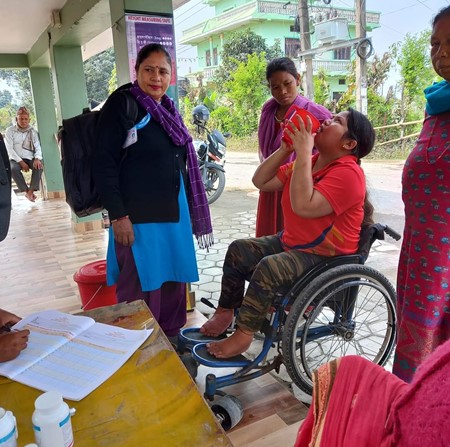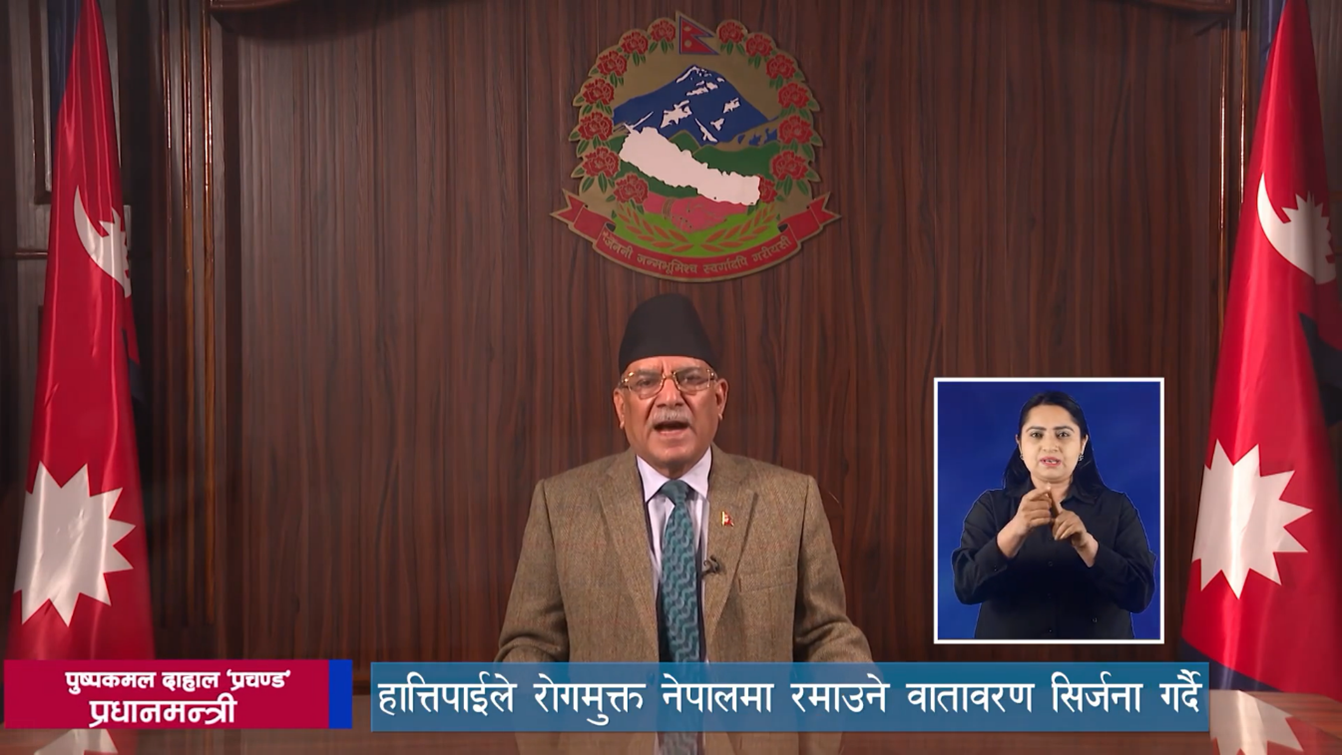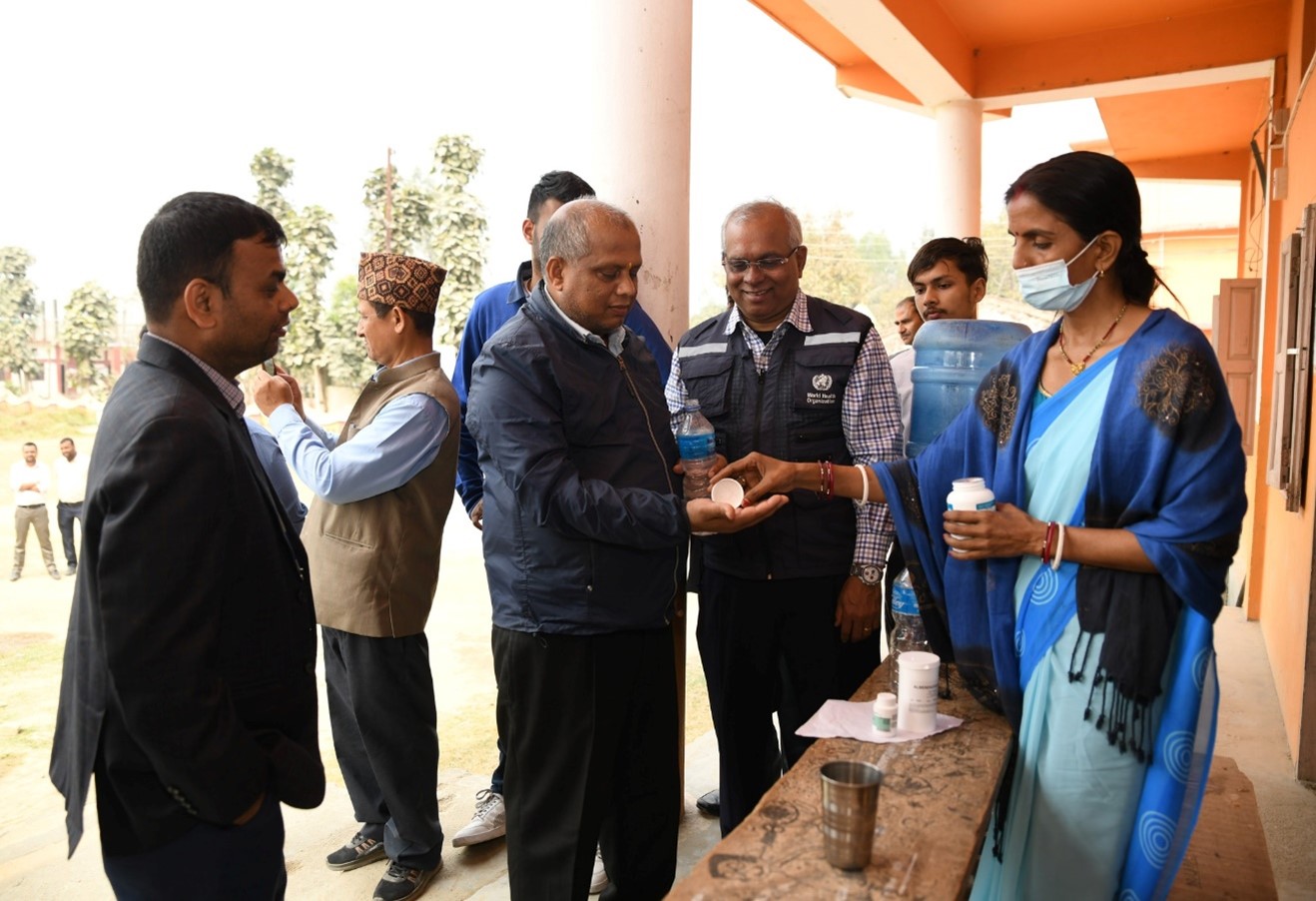In a significant step towards eliminating lymphatic filariasis (LF) as a public health problem, Nepal has successfully completed a Mass Drug Administration (MDA) campaign in 15 districts between 23 February and 16 March.
Based on the risk assessment conducted by the Ministry of Health and Population, the 15 districts (Jhapa, Morang, Dhanusha, Mahottari, Rautahat, Sarlahi, Bara, Rasuwa, Lamjung, Parbat, Baglung, Kapilvastu, Banke, Dang, and Kailali) were chosen.

Mass Drug Administration (MDA) against Lymphatic Filariasis in Morang, Koshi Province, Nepal. Photo credit: WHO Nepal/A.Thapa
MDA is the primary strategy used by the Lymphatic Filariasis Elimination Program in Nepal to prevent transmission of the disease, which involves providing at-risk populations with preventive chemotherapy.
With WHO support, Nepal has been carrying out MDA campaigns since 2003, using two types of drugs - DA-diethylcarbamazine (DEC) and albendazole.

A person with disability receiving drugs against Lymphatic Filariasis in Baglung, Gandaki Province, Nepal. Photo Credit: P. Sharma
Since 2022, the government has adopted a triple drug regimen consisting of ivermectin, DEC, and albendazole (IDA) as it is more effective than the commonly used DA regimen in clearing larval filarial parasites from an infected person’s blood. This year, Bara, Baglung, Lamjung, and Parbat continued to use the DA regimen, while the remaining 11 districts used the IDA regimen as per WHO’s latest recommendations.
Alongside providing the drugs, WHO also supported district level orientations, monitoring visits, printing of MDA registers, and planning at the federal and district level, which also included inter-ministerial coordination meetings. The Prime Minister and the Minister of Health and Population also made public addresses to encourage eligible populations to participate.

Public address by Hon'ble Prime Minister of Nepal requesting eligible population to participate in the campaign.
After the current round of mass drug administration, the five districts that started using the IDA regimen will undergo an epidemiological monitoring survey. An IDA Impact Survey, to evaluate the effectiveness of the IDA regimen in eliminating LF in these districts, will also be conducted.

Mass Drug Administration (MDA) card was one of the innovative practices adopted by many local levels to ensure that no members are left out. An elderly woman displays her card after receiving drugs against Lymphatic Filariasis in Nepal. Photo credit: L. Sharma
“The commitments shown by local governments and increased engagement of elected representatives and wider community participation is commendable and has ensured the campaign's success,” stated Dr Rajesh Sambhajirao Pandav.

WHO Representative to Nepal conducting a monitoring visit during the Mass Drug Administration (MDA) Campaign against Lymphatic Filariasis at Dhanusha District, Madhesh Province, Nepal. Photo credit: WHO Nepal
The support of partners such as WHO, RTI International, and Fairmed International, has been critical to Nepal's achievements, and with sustained partnership and the commitment from the Government of Nepal, the country is likely to eliminate Lymphatic Filariasis as a public health problem by 2030.
